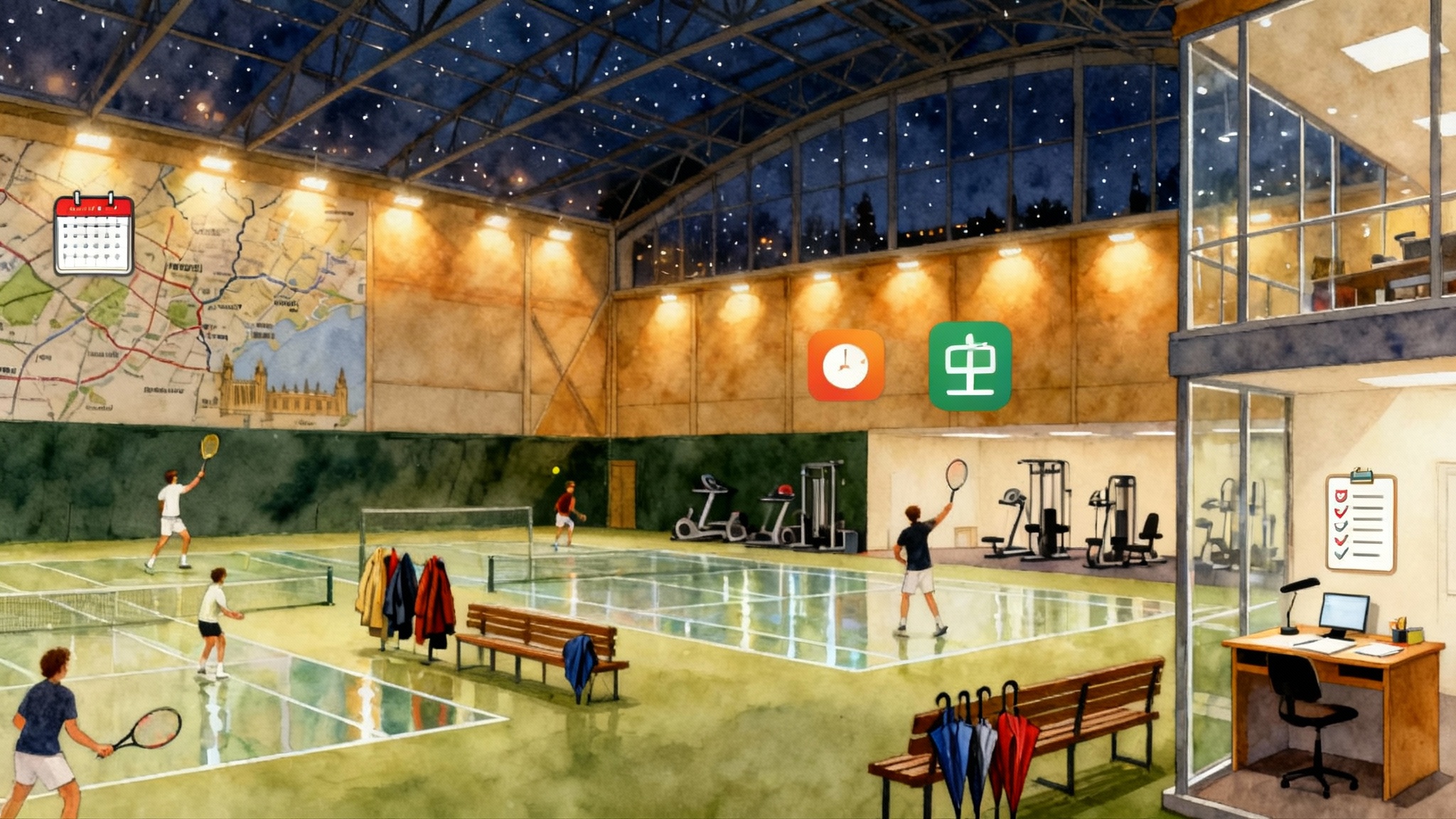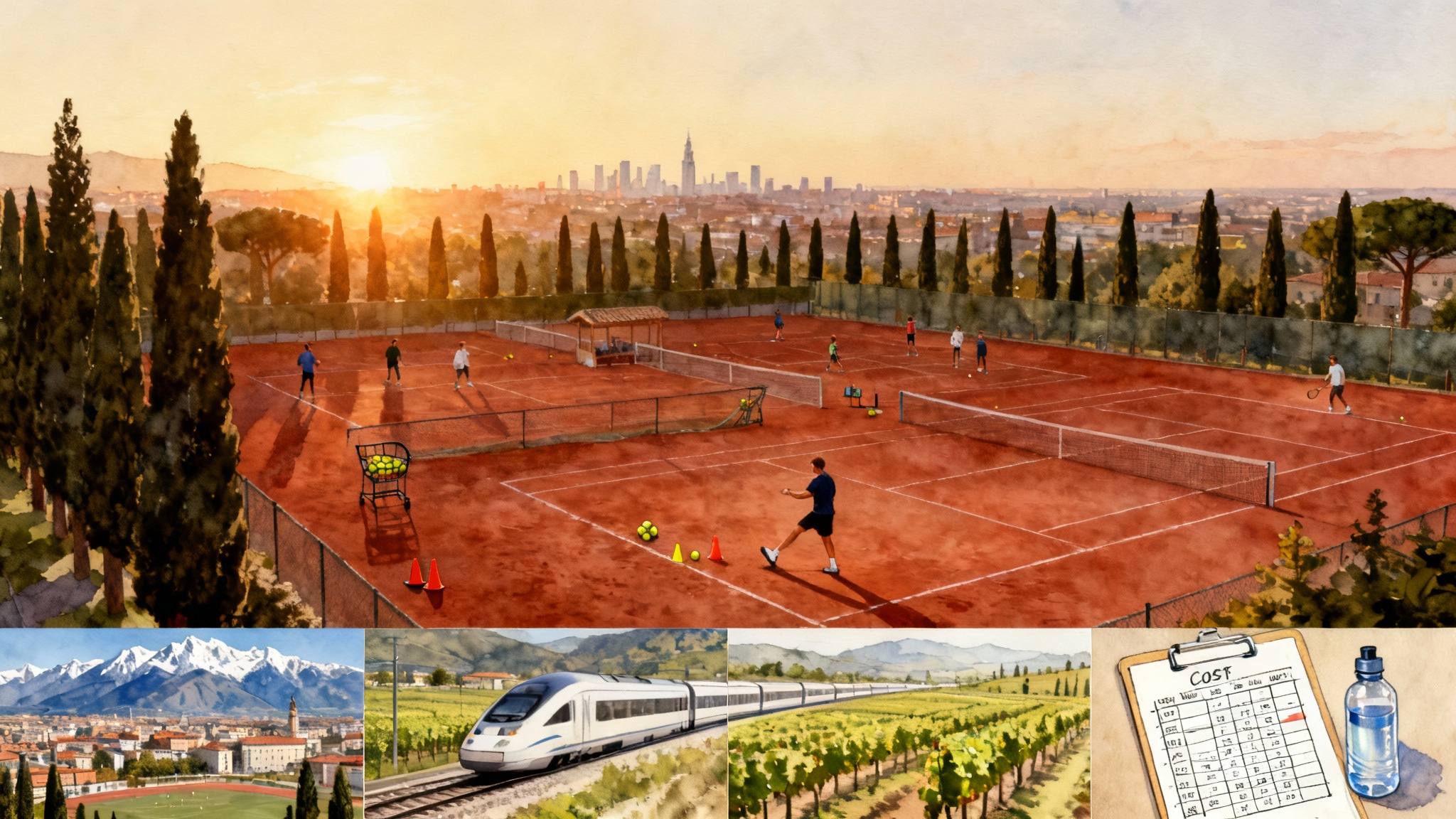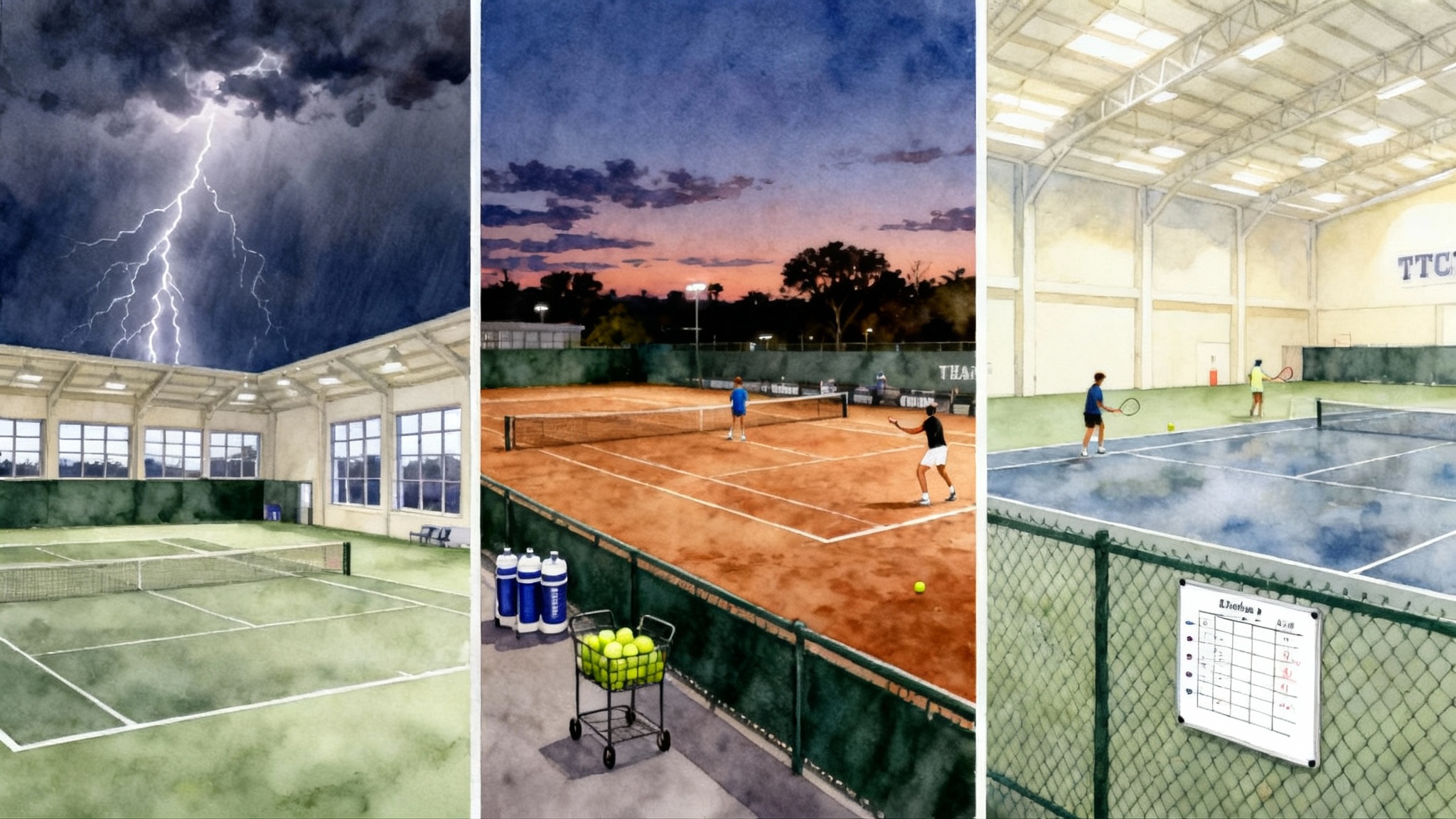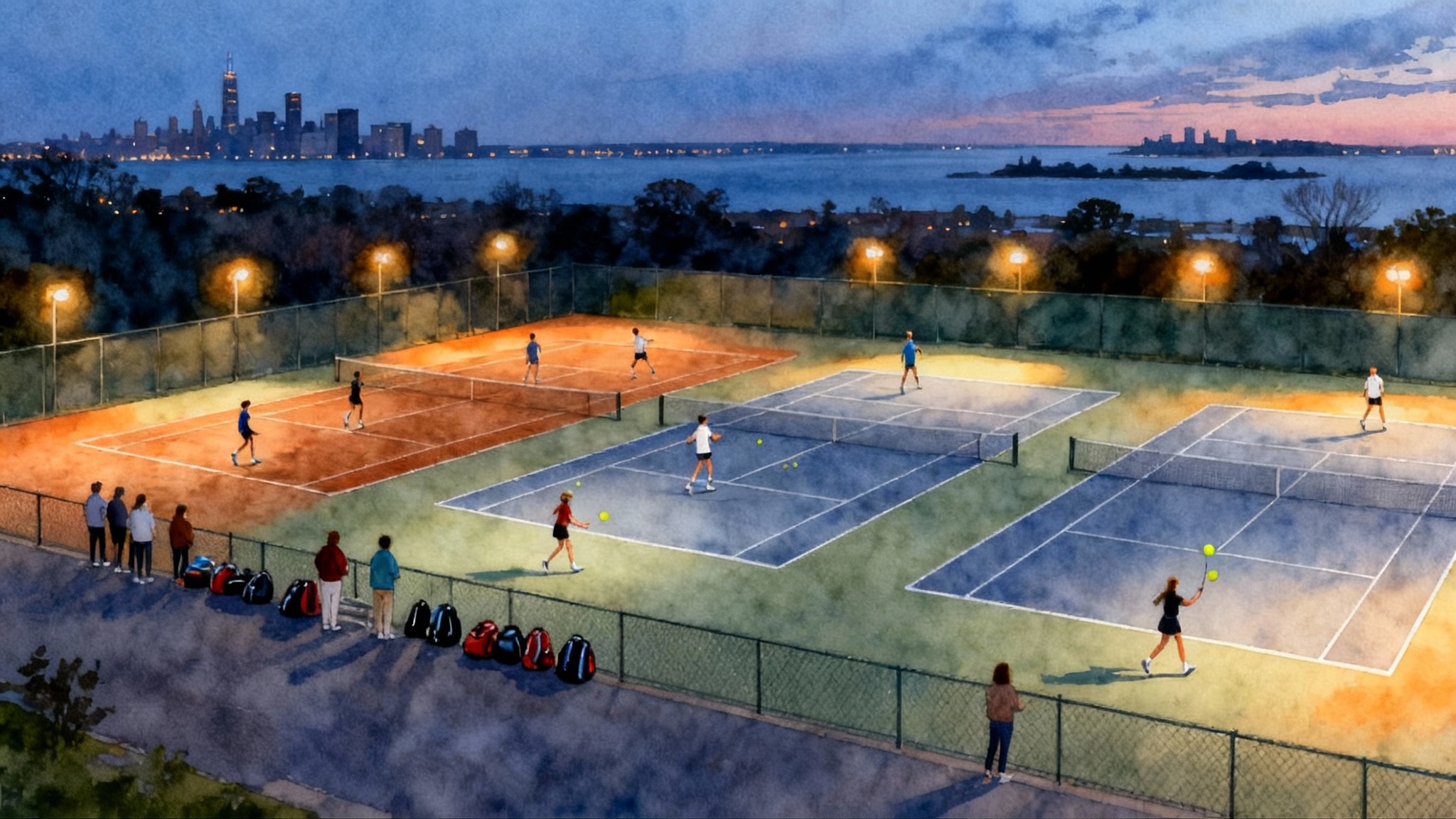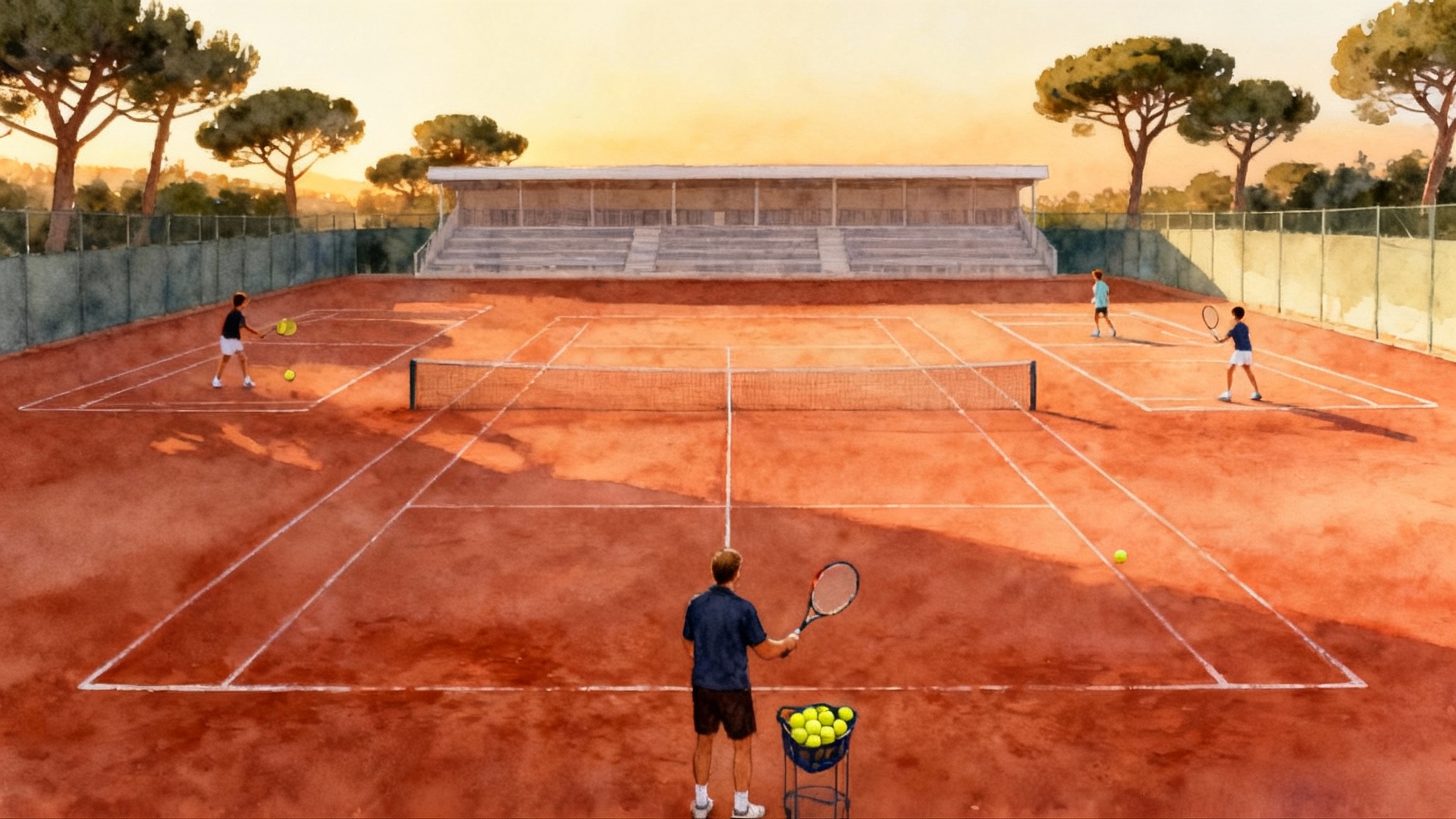Best New England Tennis Academies 2025–2026: Boston to Hartford
A winter-proof buyer’s guide for families comparing Boston, Providence, and Hartford tennis academies by indoor court access, year-round continuity, UTR and USTA pathways, school options, travel load, total cost, tryout timelines, and scholarships.

How to use this winter‑proof guide
New England families build junior tennis plans around one reality: February is coming. The best academy choice is not only who has the top coaches, but who can keep your player competing, improving, and healthy when the thermometer dips and school calendars churn. This guide compares the three biggest hubs Boston, Providence, and Hartford across indoor access, year‑round continuity, UTR and United States Tennis Association competition pathways, school and boarding options, travel load, total annual cost, 2025–2026 tryout timing, and scholarships. If you are also considering warm‑weather programs, compare options with our Florida academies 2025–2026 guide.
You will find a clear way to ask every academy the same questions, pressure‑test their winter plan, and model your budget before tryouts. We also spotlight Providence Tennis Academy so you can see what a strong New England offering looks like in practice.
The indoor court equation that decides your winter
When courts move indoors, capacity collapses. A club that feels roomy in June can be oversubscribed in January. Use this three‑part indoor test on any academy tour:
-
Courts per training block: Ask how many indoor courts run during after‑school prime time and how many players are scheduled per court. Target 3 or fewer athletes per side for drilling and 2 per side for point play. If a program relies on 4 per side during the week, your player will spend more time waiting than hitting.
-
Prime‑time ladder: Request the weekly grid for 3 pm to 9 pm, Monday through Thursday, from November to March. Look for secure recurring court blocks, not ad hoc shares. Ask what happens on snow days and how makeups are scheduled in the same week.
-
Surface and resilience: In winter, hard courts dominate, but some Boston and Hartford sites maintain indoor clay. Clay is softer on joints and great for pattern building. The tradeoff is slower points and more frequent court maintenance. Confirm if a storm knocks out a bubble, where training moves the next day.
Concrete ask: on your tour, say, “Show me next February’s Tuesday courts from 4 to 8, court by court.” If they cannot, continuity will be a gamble.
Year‑round continuity, not just winter survival
A strong New England academy synchronizes winter blocks, spring school teams, summer travel weeks, and fall cross‑country conflicts into one plan. Look for:
- A written 12‑month periodization plan with on‑court themes, strength phases, and scheduled taper weeks around key tournaments.
- A summer handoff that keeps continuity when outdoor clubs reopen. Ask which coaches remain with the same player group through June and July and which move to adult programming.
- A clear injury‑prevention routine in December through March, when volume is highest. You want daily activation, twice‑weekly strength, a landing mechanics check for serves, and a stringing plan that keeps tensions consistent in dry heated air.
Ask to see last year’s season calendar and how they adjusted when storms or school closures hit. Continuity is a system, not a promise.
USTA and UTR pathways, explained in two minutes
Your player’s schedule will mix United States Tennis Association events and Universal Tennis Rating matchplay. USTA events place players in age divisions and level bands. Read the USTA junior pathway overview to align on levels, ranking points, and endorsement rules. The academy should map a seasonal plan that blends sections events with targeted inter‑section trips only when the return on experience is clear.
UTR centers on rating parity. Players rise by consistently winning against similarly rated opponents. Structured weekly matchplay with known ratings is the fastest way to stabilize confidence and build patterns under pressure. If the academy cannot show a weekly UTR‑tracked match block, ask how they will replace that development time. For a concise explainer of the rating math, see how the UTR system works.
Practical benchmark: instead of chasing a specific rating, target measurable skills. For example, 60 percent first‑serve percentage in live sets, 65 percent forehand depth past the service line under rally tolerance constraints, and two reliable return patterns on the ad side. Ratings follow habits.
School and boarding: three workable models in New England
Unlike Florida, fully residential academies are rare in New England. Families generally choose among three models:
- Day academy with local school alignment: The player attends public or independent school and trains after classes. Confirm the school’s early dismissal policy for weekday matches and whether the academy can shift blocks during exam weeks.
- Blended school with online coursework: Some academies support students who take one or more classes online to free late‑afternoon training windows. Verify accreditation, proctoring, and transcript handling. Clarify where your player studies on site between sessions.
- Light residential via host families: A few programs match out‑of‑area players with host families for winter months. Vet background checks, transportation guarantees, weekend supervision, and curfew policies.
Ask for the name of the school administrator and a sample weekly schedule for a current player at your grade level. If the academy cannot produce both, coordination may be weak.
Travel load by city
New England’s small geography helps, but winter roads slow everything. Estimate travel like a business, not a hope:
- Boston hub: Deepest pool of indoor courts and events, heaviest traffic. Expect 30 to 60 minutes to most weekday training, and 45 to 90 minutes for many weekend tournaments. Airport access is excellent for occasional national trips.
- Providence hub: Central to Rhode Island and Southeastern Massachusetts, lighter traffic, competitive density improving every year. Many families see 15 to 35 minute weekday drives and under 75 minutes to most section events in Massachusetts or Connecticut.
- Hartford hub: Strong suburban access and straightforward highway routes. Expect 20 to 45 minutes on training days and under 2 hours to reach most New England sectional sites. Winter storm decisions are often clearer thanks to simpler commutes.
If you split time between New England and the Mid‑Atlantic, cross‑reference options with our DMV academy guide 2025–2026.
The true total annual cost, line by line
Run your numbers with transparent assumptions. Costs vary, but these are realistic New England ranges for a serious year:
- Group training: 8 to 12 months of after‑school blocks at 3 to 5 days per week typically totals 7,500 to 16,000 dollars depending on city and ratio.
- Private lessons: One session per week for 48 weeks, 60 to 90 minutes, at 110 to 180 dollars per hour adds 5,500 to 12,000 dollars.
- Strength and injury prevention: Small‑group or individual work 1 to 2 times per week, 1,500 to 4,000 dollars annually.
- Tournament entry fees: 35 to 90 dollars per event for weekend USTA play, plus UTR matchplay blocks. Budget 1,000 to 2,500 dollars.
- Travel: Fuel, tolls, occasional hotel, and meals. For a New England‑heavy schedule, 1,500 to 3,500 dollars. Add more if flying to nationals.
- Strings and racquets: Two to three matched frames, 500 to 900 dollars. Stringing at winter frequency 25 to 45 dollars per job, 400 to 1,000 dollars.
- Footwear and apparel: Two to four pairs of shoes in winter, 300 to 800 dollars.
- Academic support: Occasional tutoring around travel, 300 to 1,200 dollars.
Total annual range: roughly 18,000 to 39,000 dollars for a committed pathway in New England, before scholarships. Boston often sits toward the higher end due to court demand. Providence and Hartford can deliver similar training time for less if travel is lighter and privates are scheduled efficiently.
Savings idea: batch private lessons in 10‑packs, string multiple frames at once to reduce trips, and cluster tournaments within 90 minutes of home.
Spotlight: Providence Tennis Academy
Providence Tennis Academy serves families in Greater Providence who want serious training without Boston traffic. What stands out when you apply the winter tests:
- Indoor access: The program trains across reliable indoor blocks in the Providence area with sensible player‑to‑court ratios during prime time and weekend matchplay that counts toward UTR. Ask for the February and March evening grid and you will see consistent scheduling.
- Year‑round continuity: The staff maintains a single coaching voice through winter into spring and transitions cleanly to summer outdoor courts without diluting competitive groups. Expect clear periodization, prehab work, and weekly match themes.
- Competition pathway: Players move through USTA New England events and targeted UTR matchplay, with coaches helping families map six to eight key weekends and adding trips only when the development case is strong.
- School alignment: Most athletes are day students at local schools. The academy helps families coordinate early dismissals during tournament Fridays and supports blended schedules when needed.
- Travel load: Central Providence locations shorten weekday drives. Many families report that reduced road time keeps academics steady and energy higher in February.
- Value: Costs trend in the middle of New England ranges. Families often stretch dollars further by using local events and shared private lesson slots.
If Providence is a convenient hub for you, put this program on your short list, then compare it against one Boston option and one Hartford option using the same scorecard from this guide. For location, programs, and contact details, see our Providence Tennis Academy profile.
Compare by city, at a glance
Use these quick notes to frame apples‑to‑apples conversations.
Boston
- Indoor access: Deep inventory, but prime time is crowded. Make sure ratios are protected in writing.
- Continuity: Many coaching options and specialty performance centers for strength. Manage coach turnover by confirming who will run your player’s group month to month.
- Competition density: Highest in the region. Frequent in‑house matchplay opportunities.
- School options: Broad set of public and independent schools used to athlete schedules.
- Travel load: Heavier weekday traffic. Plan departure buffers in winter.
- Cost band: Upper mid to high.
Providence
- Indoor access: Reliable blocks with efficient ratios. Easier to secure weekday courts than in Boston.
- Continuity: Tight staff that keeps groups together across seasons.
- Competition density: Strong within 90 minutes across Rhode Island, Massachusetts, and Connecticut.
- School options: Simple coordination with local schools; blended schedules workable.
- Travel load: Lightest weekday commute for many South of Boston families.
- Cost band: Middle.
Hartford
- Indoor access: Stable suburban court supply and straightforward scheduling.
- Continuity: Coaching staffs are steady and groups are cohesive through the academic year.
- Competition density: Good access to New England sectional events with manageable drives.
- School options: Public and independent schools that support early release for events.
- Travel load: Predictable highway routes. Winter decisions are simpler than in city traffic.
- Cost band: Middle to upper middle depending on private lesson volume.
Tryout timelines and what coaches evaluate in 2025–2026
Mark dates now so you are not scrambling.
- October to November 2025: Initial outreach. Book facility tours, observe a training block, and request the winter prime‑time grid. If your player is in school season, ask for a weekend visit.
- December 2025: Holiday camps. Many academies use these as informal evaluations. Capture on‑court video to share with staff if you cannot attend every day.
- January 2026: Mid‑winter check‑ins. If you plan to switch programs for spring or summer, schedule a trial week during school break.
- February to March 2026: Formal tryouts and small‑group evaluations for summer and fall placements. Submit report cards, coach references, and recent match results.
- April to May 2026: Offers and placement conversations. Clarify training days, ratios, and private lesson times before you pay deposits.
- June to August 2026: Summer blocks begin. Lock fall schedules in July while time slots are still open.
What coaches evaluate:
- Movement base and footwork patterns more than flashy winners.
- Rally tolerance. Can your player execute patterns for eight to twelve balls when asked.
- Serve frameworks. First‑serve percentage and second‑serve spin by intention.
- Coachability. Eye contact, note taking, and between‑point routines.
How to prepare in two weeks:
- Film one set from a high back‑corner angle and one serve practice session. Share links ahead of time.
- Warm up the same way on tryout day as you do before tournaments. Consistency signals maturity.
- Arrive with a short written goal sheet for 90 days, 6 months, and 12 months.
Scholarships, discounts, and making it affordable
Aid exists. You just need to ask early and show commitment. Typical options:
- Need‑based aid: Some academies allocate a small fund each season. Submit your request with tax documentation in January or February before slots fill.
- Merit placements: A limited number of partial scholarships reward competitive results and leadership. Provide recent match records and a short coach reference.
- Sibling discounts: Commonly 5 to 15 percent off the second athlete.
- Work‑study: Stringing, court setup, or assisting in red‑ball classes can offset a portion of tuition for older juniors. Clarify hourly credits and supervision rules.
- Equipment partnerships: Coaches may have relationships with brands. Be ready to track string usage and provide feedback in exchange for discounts.
How to ask, step by step:
- Lead with fit. Explain why this academy’s coaching and schedule match your player.
- Share a one‑page snapshot: grades, schedule constraints, match results, and a short video link.
- State your realistic budget gap in dollars and the program elements you would prioritize if partial aid is available.
- Offer something concrete in return. Examples include mentoring younger players during orange‑ball sessions or helping at weekend matchplay.
- Set a follow‑up date and send a thank‑you note summarizing the conversation.
Language you can reuse:
“After reviewing our finances, we can commit to three training days and one private per week, totaling about X dollars per month. If there is any way to close a Y dollar gap through need‑based aid or a work‑study role, we would be grateful and fully committed to the community responsibilities that come with it.”
Your action checklist for Boston, Providence, and Hartford
- Book three tours: one academy in each hub. Observe on a Tuesday or Wednesday after 4 pm in January or February.
- Request the winter prime‑time court grid and confirm ratios in writing.
- Map a 12‑month calendar with training phases, planned tournaments, and family travel blocks.
- Run the annual budget with realistic private lesson and stringing assumptions.
- Ask three families in the program how makeups and storm policies worked last winter.
- For Providence Tennis Academy, compare drive time and value against your Boston or Hartford alternative, then choose the hub that best protects your player’s February.
- If you plan a bi‑regional year, skim our Best NorCal academies 2025–2026 to see how West Coast schedules differ.
The bottom line
In New England, the right academy is the one that wins February, not just August. When indoor access is reliable, coaching voice is steady, and matchplay is scheduled every week, development compounds. Use the tests and timelines in this guide to compare Boston’s depth, Providence’s efficiency, and Hartford’s balance. Shortlist two programs, run the same scorecard, and choose the plan that your player can repeat, happily, for twelve straight months. That is how New England families turn cold winters into steady progress and spring results.

